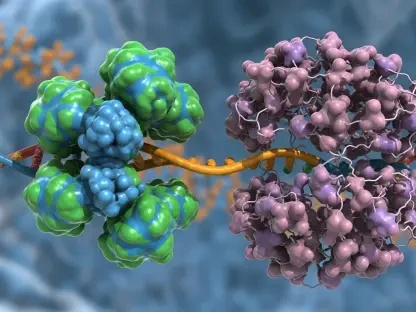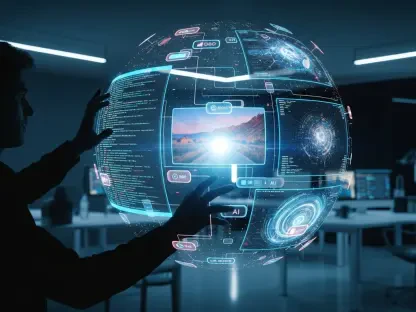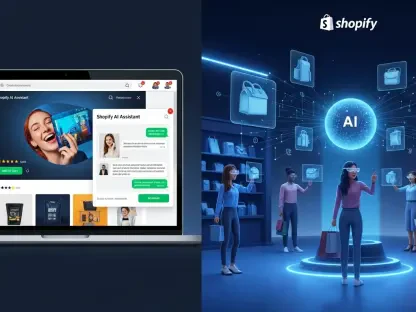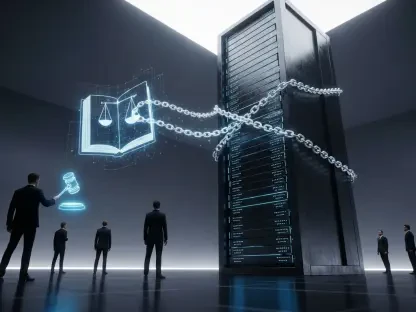Imagine a workplace where digital colleagues handle complex tasks and assist employees beyond the routine, setting new productivity standards. This vision comes alive with Microsoft’s launch of powerful AI agents in its Microsoft 365 Copilot Wave 2 Spring release. In a strategic move to reshape workplace dynamics, Microsoft presents a challenge to Google’s longstanding dominance in the AI technology sector. This review delves into the core features, performance, and transformative impact of these AI workplace agents, providing a comprehensive understanding of their capabilities and future potential.
Contextual Introduction
Microsoft unveiled its AI agents to revolutionize how work is executed, introducing agents as integral collaborators in professional environments rather than mere tools. Positioned to redefine productivity, these AI agents signify a strategic shift in Microsoft’s AI vision, aiming for seamless human-agent interactions that set new benchmarks in corporate technologies. With technology aiming to enhance productivity at scale, the backdrop of the strained workforce only heightens the need for such transformative solutions.
Analysis of Key Features
Deep Reasoning Capabilities
Microsoft’s AI agents leverage advanced deep reasoning models, particularly those developed in collaboration with OpenAI. These capabilities allow the agents to perform complex research tasks and data analyses traditionally requiring high-level human expertise. Functioning as digital researchers or data scientists, these agents provide organizations with the ability to access intricate insights with ease, transforming job functions and providing a competitive edge.
Human-Agent Collaboration
The collaboration framework is meticulously designed to ensure seamless integration between AI and human intelligence. By moving beyond basic textual interactions, Microsoft’s Copilot software acts as an organizing layer, similar to a web browser’s role of managing online content. Tools like Copilot Notebooks and Copilot Search facilitate users in directing AI across multipurpose contexts, fostering a work environment where collaborative synergy is the norm rather than the exception.
Recent Developments and Innovations
Recent years have witnessed significant advancements in AI workplace agents, driven by industry demands and innovations. Microsoft’s strategy addresses the pervasive “Capacity Gap” where workforce fatigue intersects with the demand for productivity, positioning AI agents as augmentation tools rather than replacive technologies. Consequently, a shift from employee-led to management-centric AI adoption emerges, backed by Microsoft’s strategic foresight and industry influence.
Real-World Use Cases
AI workplace agents are being integrated across diverse industries, from finance to healthcare, reshaping operational norms. Notably, the adoption in sectors requiring data analysis and decision-making highlights unique use cases, such as automating financial assessments or streamlining patient care processes. These implementations underscore the transformative potential of AI agents as they extend capabilities that empower corporate ecosystems and enhance strategic decision-making.
Addressing Challenges
Despite the potential benefits, AI workplace agents face several challenges. Technological hurdles, regulatory compliance, and market adoption remain significant concerns. Efforts are ongoing to address these obstacles, with technological refinement and regulatory frameworks evolving to keep pace with AI innovations. As AI workplace agents continue to develop, overcoming these challenges remains vital to broadening their adoption and maximizing their efficacy.
Future Prospects
Looking ahead, AI workplace agents are poised to drive significant breakthroughs and impact industries extensively. As technology advances, the potential for enhanced capabilities grows, promising a future where AI agents support a wider array of tasks and industries. Anticipating a shift in workforce dynamics, organizations can expect new roles centered around AI management and training, fundamentally altering workplace structures and competitiveness.
Conclusion with Next Steps
In retrospect, Microsoft’s introduction of AI workplace agents marked a pivotal moment in corporate technology evolution. By addressing productivity challenges and enhancing workplace collaboration, these agents set a precedent for the future of AI in professional settings. Moving forward, the focus should be on refining these technologies, ensuring ethical and efficient integration, and preparing the workforce for a collaborative future with AI agents at the core. Organizations should consider strategic investments in AI to harness these agents’ full potential, shaping a future where human ingenuity and AI intelligence converge seamlessly.









